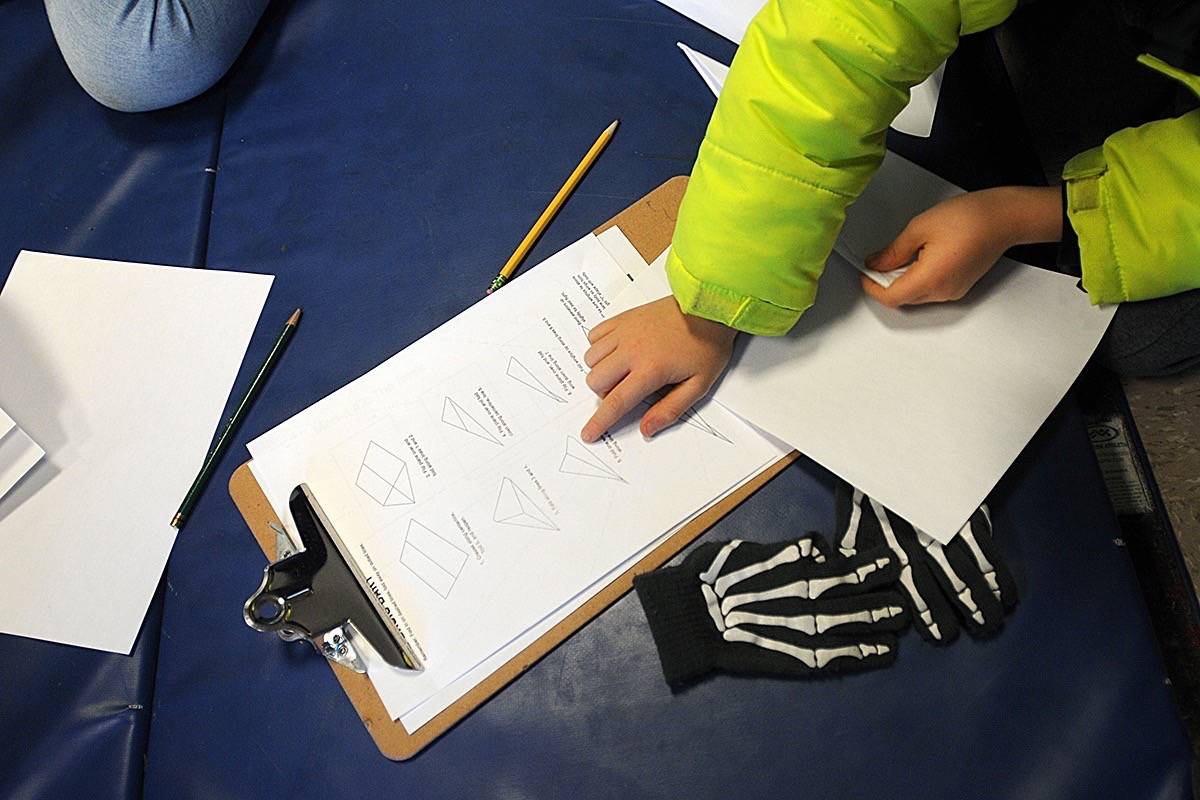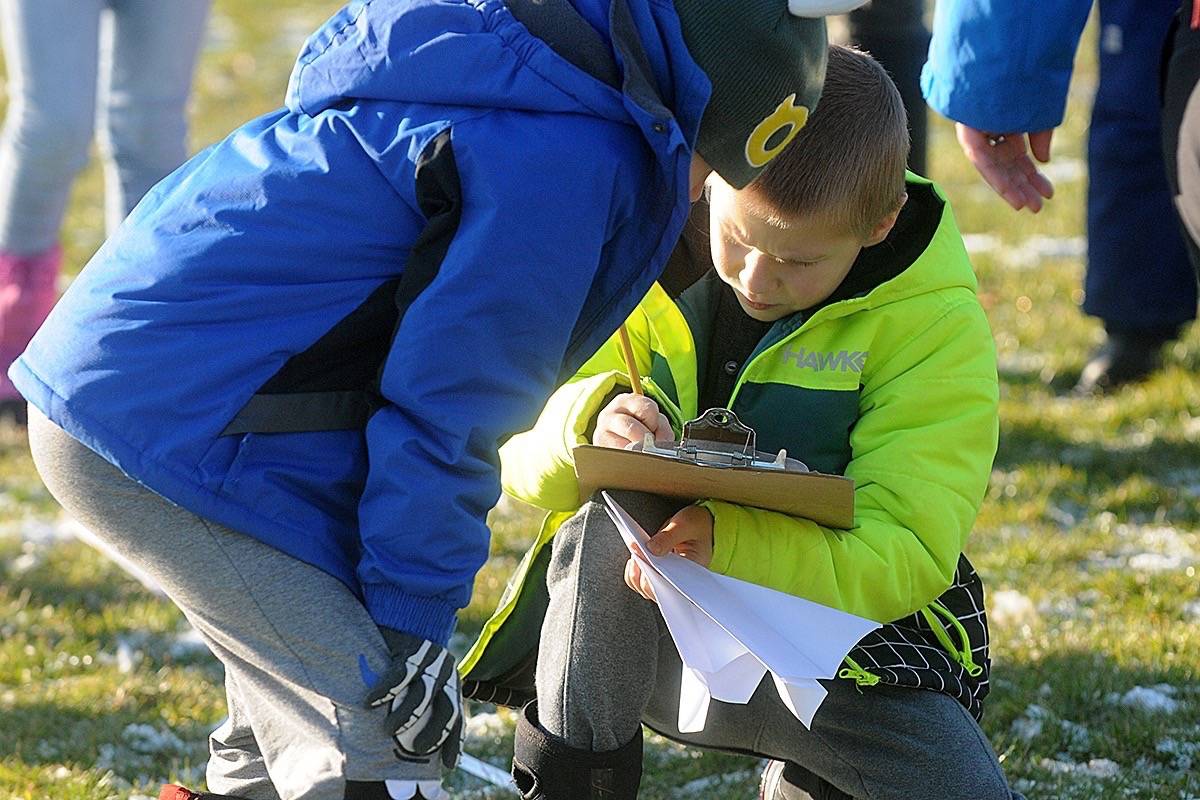A young girl stands in a room at Blue Mountain elementary, on the phone, madly trying to get in touch with a family member.
Not because she is sick or in trouble, but because she wants to stay after school and learn about aerodynamics.
Wild and Immersive is a new educational experience, part of the UBC Research Forest.
Students who take part in the classes get out into the outdoors to learn more about math, science and the environment surrounding them.
“The goal of it is to provide applied learning experiences with real world applications that helps people build confidence and connections to the natural environment,” explained UBC’s Wild and Immersive education coordinator Victoria Farahbakhchian.
Teachers or groups can choose from a list of education modules already put together, or they can even customize ones that will compliment class teachings.
Eight students stayed after school at Blue Mountain elementary to take part in a module called Beaks and Feathers. This program was open to students anywhere from kindergarten to Grade 7.
Instructors talked about how birds fly, how their wings help them fly and some of the ecology to do with birds.
Before going outside the students made paper airplanes. Some had short wings, others long. Some planes had pointed noses and others flat. The goal was to see which ones flew the furthest and why.
“The students are learning about aerodynamics. They are learning about how to make proper hypothesis and learning about how to measure distance,” explained Farahbakhchian as they took turns in groups of two, flying their planes in the back field of the school.
Other programs take place in the woods of the Malcolm Knapp Research Forest, like Logs to Logarithms, a math-based module that demonstrates real world applications of logarithms, trigonometry and geometry.
“This module works to incorporate the B.C. curriculum of Gr. 10 to 12 math,” said Farahbakhchian.
“Like the big ideas in a real world setting. And it takes teachings from foresters that use math on a daily basis to calculate timber value, stand density, length of each soil horizon and so on,” she continued.
And it’s not just math, continued Farahbakhchian, who has her Masters in Science, students also do tree identification, they learn about statistics and learn how to do a proper study. In addition they do tree measurements, they measure the diameter of a tree, the height and basic area.
“So they understand all those things they learn in the classroom, those really basic core values,” noted Farahbakhchian.
Andrea McDonald is the program supervisor of the small Wild and Immersive team who is creating the new modules, revamping them, making them exciting, engaging and fun.
All of the modules incorporate games, hands-on activities, physical literacy, movement, physical activity, exploration, creative play and critical thinking.
“So, it’s not just stagnant. We’re not just saying here’s a math problem now go do it. From start to finish, it’s engaging, it’s fun. We’re allowing them to be curious,” said Farahbakhchian.
McDonald is in the midst of creating one called Trigonome-TREE that gives trigonometry real-world application. Trigonometry is commonly used in forestry to measure tree heights by using three basic functions of sine, cosine, and tangent, commonly referred to as SOHCAHTOA.
“We come out and we start by learning the measurements of our body,” explained Farahbakhchian. Participants learn about wingspan and they learn how to estimate in metres the span of their own arms and their own height.
“Then we start asking them to walk and we start to measure, what’s my average pace. Every time I take a step is that 0.5 metres is that a one metre step, is it a .01 metre step? So we start to understand the measurements of our body,” Farahbakhchian said.
“Once we understand ourselves we can start to make estimations of what are the measurements around us,” she added.
They teach the children how to eyeball measurements like what five metres looks like, ten metres and 40 metres and then they measure using a laser to see how close to reality the estimations were.
The Wild and Immersive modules only started last February and are open to preschool children right up to Grade 12 and also post-secondary.
“We customize all of our programs to fit the needs of our students,” said Farahbakhchian.
In 2018 they had 1,953 people participate in their programs. This year they have already booked 25 groups.
For a four hour field trip the cost is $10 per student and any longer than that the cost is $15 per student.
Farahbakhchian believes this is a great opportunity for students to take what they have learned in the classroom, get out of their comfort zone or routine and put it into action.
She also sees it as a way to bridge the gap between the old way of teaching math and the new way that is now part of the provincial curriculum.
“I think there needs to be a balance,” she said.
“We need to have a deeper understanding of math and why we are doing it, but I also see value in repetition and understanding the core principals,” she continued.
What is missing in the curriculum, in Farahbakhchian’s opinion, is this real-world experience.
“You can only read so many problem solving questions without getting bored and your eyes glazing over. So if you take them outside, this is just another way to kind of engage them,” she said adding that especially during their younger years of learning, children should be provided with as many different experiences and environments as possible.
“Maybe these real world applications, when fresh air and tools that makes them feel important, makes them see a connection to something greater like a job, a paycheck, will excite them as well,” said Farahbakhchian.
“It’s just another way of teaching.”
For more information go to wildlearnings.ca.

